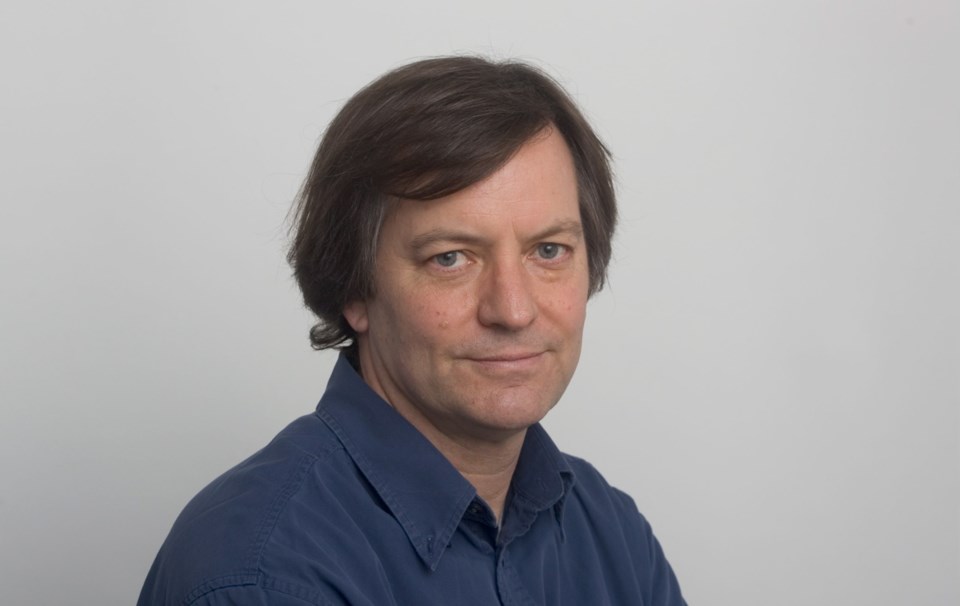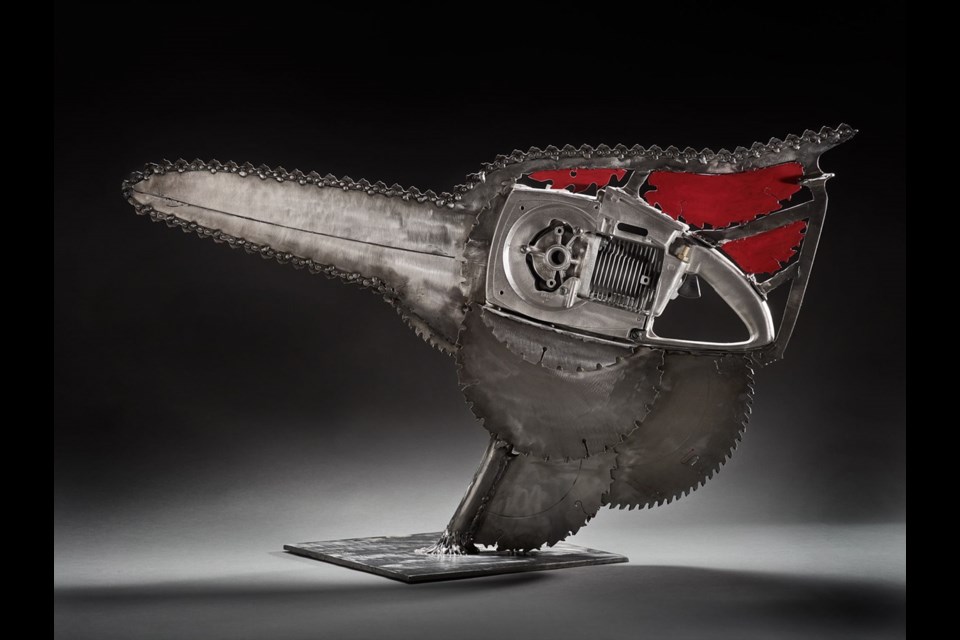 The Robert Bateman Centre is a bright display space on the upper level of the Steamship Terminal on the Inner Harbour. Bateman, who lives on Salt Spring Island, has set up this space as an educational wing of his not-for-profit foundation, dedicated to fostering awareness of the natural world. The main attraction is a retrospective survey of the work of Bateman, probably the foremost “wildlife” painter in the world.
The Robert Bateman Centre is a bright display space on the upper level of the Steamship Terminal on the Inner Harbour. Bateman, who lives on Salt Spring Island, has set up this space as an educational wing of his not-for-profit foundation, dedicated to fostering awareness of the natural world. The main attraction is a retrospective survey of the work of Bateman, probably the foremost “wildlife” painter in the world.
There are more than 80 original paintings by Bateman on display, ranging from leaves of his sketchbooks as a backyard birder to huge and dramatic canvases. In addition, examples of his “original prints,” both etchings and lithographs, join some of his small bronze statues. The exhibition is replete with cellphone apps, video presentations and a hands-on space for kids of all ages to get creative.
What brought me to the Bateman Centre this time was a new exhibit, entitled Migrations: Travellers of the Salish Sea, which is complemented by a dozen sculptures by Salt Spring artist Peter McFarlane. McFarlane’s striking work is created from recycled stainless-steel machine parts, mostly chainsaw engines and blades.
From these tools of destruction he has created birds, whales and a forest of fir trees, and in doing so introduced me to a new word: enantiodromia.
“When things reach their extreme they turn into their opposite,” is how McFarlane defines it. From vicious saw teeth arises a gentle new growth.
These grisly and gleaming chainsaw parts stand amid the Migrations exhibit, truly more of a book than a show. Well-informed members of our local community are quoted on extensive wall panels, offering their insights about animals that migrate through the Salish Sea. First Nations elders, birders, nature activists and scientists all have things to say at once concise and profound — it’s surprising what we don’t know about the waters that surround and sustain us.
One story tells about the sea wolf who lives on Discovery and Chatham islands. Another describes the life and ecological position of the herring, once so prevalent on the Gorge Waterway. Herring bones appear in middens on the Gorge dating back past 2,000 years. The last recorded spawning was in the late 1980s, and where they are spawning now is a mystery.
There is so much to learn. A banded hummingbird has been netted here eight years in a row, and though it weighs just 3.5 grams, it turned up last year in Virginia, 4,000 km away.
I learned of our three local migratory-bird sanctuaries, at Victoria Harbour, Esquimalt Lagoon and Shoal Harbour, each established in the 1920s and then forgotten for decades. And I learned that the name Salish Sea was adopted by Canadian and American governments in 2010, after 20 years of work, to recognize this extraordinary geographic entity that extends from Desolation Sound to Puget Sound.
Simply naming something can have a profound effect.
“I think everybody should know the names of their neighbours — of other species. Not just the human ones,” Jacques Sirois has written. “If you don’t know the names of your neighbours, they could all disappear and all the native species could be replaced. It would eliminate the variety in our ecosystems.”
All to the good, but it must be noted that a display of text panels, no matter how well-produced, is not likely to slow down the casual art visitor. This sort of information, heavily dependent on the written word, is better suited to a newspaper than an art gallery. Oddly, one of the best parts of the show is the die-cut folded-paper animal silhouettes that ramble across the walls. These are available for drawing on in the kids’ zone.
��
Robert Bateman Centre, 470��Belleville St., 250-940-3630, batemancentre.org
��
For more art appreciation, I��went up to the Art Gallery of Greater Victoria, to enjoy the newly installed display of the gallery’s Emily Carr collection. It is hung with dignity, incorporating 22 originals by sa���ʴ�ý’s most important painter, and loans from the Belkin Gallery at University of British Columbia and from the Hamilton Art Gallery are a welcome addition.
The theme of Picturing the Giants is the forest, and front and centre are Carr’s haunting views of clearcuts “above the gravel pit” in Metchosin (now the Royal Bay subdivision). Carr fans will also notice three other originals in the Karen Tam exhibit at the gallery.
Otherwise, the gallery is hung with selections from the collection, specifically those by local artists. This reflects the gallery’s uncertainty about its future renovations. Exhibitions typically take years to plan and, with funding in limbo, what’s stored in the basement is being given a rare airing.
Personally, I would appreciate a bit of curatorial rigour in the selection, rather than the grab-bag effect. The absence of the Asian art department is, I hope, only temporary.
��
Picturing the Giants: Emily Carr at the Art Gallery of Greater Victoria, 1040 Moss St., 250-384-4171, aggv.ca
��
Winchester Galleries in Oak Bay continues to offer art lovers what they want. The lower level is lined with original etchings by David Blackwood, the artist laureate of Newfoundland, and they are joined by some charming painted bronze sculptures of farm animals by Joe Fafard of Pence, Sask. The main floor is given over to original paintings, mostly watercolours, by the late Toni Onley.
Onley is a painter of remarkable skill, but his reputation has been dulled by a certain sameness of subject and palette. Yet this show of never-seen-before works provided by the artist’s daughter offers much that is fresh and new. Chosen with a discerning eye, they yield a combination of surprise and delight.
��
Toni Onley: Paintings, at Winchester Galleries, 2260��Oak��Bay Ave., 250-595-2777, winchestergalleriesltd.com, until��July 29



